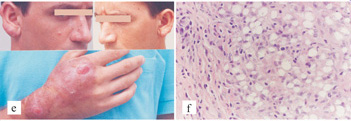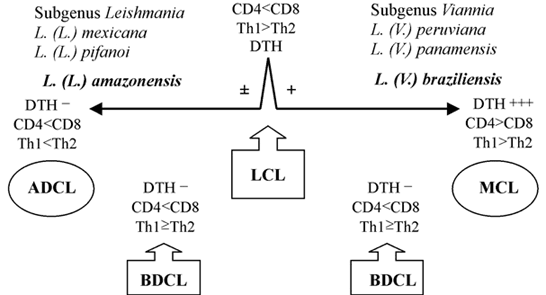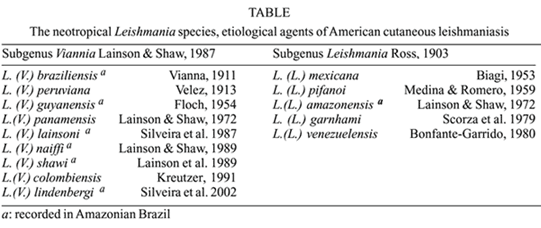The wide variety of Leishmania species responsible for human American cutaneous leishmaniasis combined with the immune mechanisms of the host results in a large spectrum of clinical, histopathological, and immunopathological manifestations. At the middle of this spectrum are the most frequent cases of localized cutaneous leishmaniasis (LCL) caused by members of the subgenera Leishmania and Viannia, which respond well to conventional therapy. The two pathogenicity extremes of the spectrum generally recognized are represented at the hypersensitivity pole by mucocutaneous leishmaniasis (MCL) and at the hyposensitivity pole by anergic diffuse cutaneous leishmaniasis (ADCL). Following the present study on the clinical, histopathological and immunopathological features of cutaneous leishmaniasis in Amazonian Brazil, we propose the use of the term "borderline disseminated cutaneous leishmaniasis" for the disseminated form of the disease, due to parasites of the subgenera Leishmania and Viannia, which might be regarded as intermediate between LCL and the extreme pathogenicity poles MCL and ADCL.
cutaneous leishmaniasis; clinical classification; Amazonian Brazil











